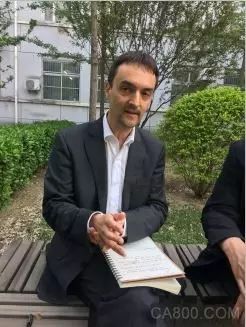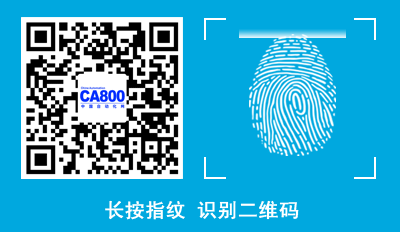
Contemporary philosopher J.E. Dinger once said, “Fate is not a matter of chance, but of choice.” For Chinese enterprises in the context of the high integration of global manufacturing and information technology, choosing a communication technology that is easy to implement, high-performance, quick to respond, and low-cost has become crucial in determining a company’s fate. EtherCAT (Ethernet for Control Automation Technology) has undoubtedly become one of the most notable communication protocols. Introduced by the German company Beckhoff in 2003 and applied in the automation field, it became an international standard (IEC/PAS 62407) in 2007. On October 21, 2014, it was officially transformed into a recommended national standard in China (GB / T31230.1~.6-2014 “Industrial Ethernet Fieldbus EtherCAT”), and in a short period, EtherCAT has nearly 500 member enterprises in China.
During the EtherCAT technology seminar held by Beijing Mengtong Technology Co., Ltd. (hereinafter referred to as Mengtong), one of the standard formulators, Stefan Zintgraf (currently Managing Director of acontis technologies), visited Mengtong. CA800 was fortunate to interview Stefan Zintgraf and understand the promotion of EtherCAT in China.

EtherCAT Supports China’s Industrial Upgrade
EtherCAT is an open high-performance fieldbus system based on Ethernet, integrating internet technology at the input/output (I/O) layer, and is a foundational technology for intelligent manufacturing. The rapid development of EtherCAT in China can be summarized by three points from Mr. Stefan Zintgraf: Firstly, EtherCAT’s most prominent feature is its fast transmission speed, which can fully utilize Ethernet bandwidth, making it the fastest solution among existing Ethernet fieldbuses; secondly, EtherCAT is based on CAN and CANopen, which are the most widely distributed fieldbuses in the industrial sector and have the most applications in automation. As a subsequent product technology, EtherCAT can easily cover this market; thirdly, China’s manufacturing sector has developed rapidly in the past, currently at a turning point for industrial upgrades, and under this backdrop, EtherCAT has been defined as a national standard to support the industrial upgrade of Chinese manufacturing.
The development history of EtherCAT demonstrates the wide applicability of this technology: it was first widely applied in the measurement technology and robotics industries in Germany, then its extensive use in the semiconductor industry in the United States became a key point in the technology’s development. Another significant development occurred in the Netherlands, where it found greater application in robotics within the pharmaceutical industry. Almost simultaneously, the automation industries in Japan, South Korea, and Taiwan began to recognize and adopt this technology, achieving excellent results. Mr. Stefan Zintgraf was astonished by the strong growth in demand for EtherCAT in China’s PLC industry, motion control industry, and robotics industry over the past few years. “I believe that in the next five years, EtherCAT will have a significant breakthrough in Chinese manufacturing, and the manufacturing level of Chinese manufacturing enterprises will increasingly approach, or even surpass, that of Western companies,” predicted Stefan Zintgraf.
Building a Complete Communication Model for Intelligent Manufacturing
Industry 4.0 outlines the vision for future industrial development and is one of the most important reference systems for “Made in China 2025.” China enjoys the reputation of being the “world’s factory,” and in the future, “intelligent manufacturing” will become the main driving force behind the explosion of the manufacturing industry. The core of this “intelligent” foundation, centered on data collection, data processing, and networking, will play a crucial role. The ideal industrial communication, or the goal of industrial communication, is to use the same communication standards. Under the framework of Industry 4.0, various independent systems and devices are interconnected, and communication is in a very important and core position.
However, the reality is that different devices use different communications. Traditional communication technologies are all transitioning towards Ethernet-based technologies, whether in research and development or application, it is primarily an internal behavior of enterprises. Meanwhile, there is a natural competitive relationship between companies, leading to a natural competitive relationship between technologies, a situation that will not change now or in the future. Every company hopes that customers will adopt their own technology to secure a certain market share. For some large companies, openness means customer loss; for relatively smaller enterprises, the benefits brought by open technologies far outweigh the risks. Market users hope that devices from different brands can interconnect, and the demand for “openness” will grow stronger. EtherCAT responds to this need.
“Communications are divided into different layers, and a standard communication system needs to be built between each layer to achieve true interconnection,” Stefan Zintgraf explained. Currently, communication with the cloud layer will use a new protocol—OPC UA, which will send the information collected from devices to the cloud or connect with factory-level SAP systems, ERP systems, and the cloud for communication. In another layer of communication, that is, between devices, OPC UA Public Subscribe is used, which is part of the TSN (Time Sensitive Network) real-time network framework.
Understanding these two layers of communication, where does EtherCAT fit in? Stefan Zintgraf provided a detailed answer: EtherCAT operates at a lower layer, enabling real-time and efficient data transmission from controllers, drivers to sensors, particularly suitable for motion control. Various communication technologies, including EtherCAT, have perfectly addressed the demands at this layer. “The future focus is on building a communication architecture between various levels.” It is understood that OPC UA technology is defining a standard information model to establish an interface between OPC UA and EtherCAT, opening up information channels, and building a complete architecture from the cloud to the device end. The promotion of EtherCAT will have more advantages. “Any place, any device, can be connected from the cloud to any manufacturer’s equipment, achieving complete interconnection and standardizing communication models.”
Undoubtedly, China is the country with the fastest progress in industrial levels. The time span of enterprises is not long, and many new production lines are built, giving certain advantages in upgrading and transforming some industries. Stefan Zintgraf believes that upgrades are endless, and this applies to industrially developed countries as well, so long-term preparation is essential. He is very optimistic about the prospects of the Chinese market. Currently, although acontis technologies’ performance in China accounts for less than 10% of its global performance, it is developing rapidly, especially in the motion control and robotics fields, which are strongly supported by the Chinese government. “The world’s most advanced products align well with China’s automation strategy to replace manual labor, and the prospects are very bright.”
EtherCAT Needs More Technical Support in China
The global manufacturing industry is transitioning from traditional buses to Ethernet buses, just as it previously transitioned from direct connection methods to bus methods. This process faces the challenge of integrating various companies’ different solutions and wiring methods into a unified EtherCAT standard bus method. EtherCAT is currently the fastest bus technology and is based on CAN and CANopen, making it very suitable for use in the motion control field. “Because motion control has this trend, it needs to transfer some functions of the driver to the controller, requiring a high-speed technology to return results to the driver. This creates the convergence point between EtherCAT and motion control.” Stefan Zintgraf also introduced another product from acontis technologies, a real-time extension under the Windows operating system, providing customers with the opportunity to use EtherCAT on the Windows platform.
Stefan Zintgraf suggested that Chinese enterprises could improve in the area of resource integration, focusing their energy on core competencies while achieving other non-core items through purchases. Engaging in professional division of labor can enhance the overall strength of enterprises. China is in a developmental phase, and the demand for high-performance software will grow increasingly. In contrast, the United States and Japan have developed to a certain stage, and the market has become saturated, while China has greater potential.
For Stefan Zintgraf, China is not only the most promising market for rapid growth but also has distinct characteristics: “Chinese customers need more technical support.” Typically, it is insufficient to provide just a software and solution; rather, it is necessary to have it running immediately on the customer’s own platform. This demand for technical support exceeds that of the U.S. and Japanese markets. “This demand can only be met through local partners.”
“As an agent of EtherCAT, Mengtong’s work goes far beyond the scope of a typical agent because EtherCAT is not a simple product, but a product that requires significant technical support. We are very clear that as a software agent, we are not merely trading but have found a partner on a technical level,” said Mr. Yuan Ye, General Manager of Beijing Mengtong Technology Co., Ltd.
Mr. Zhang Xiaopeng, Mengtong’s Technical Director, believes that Mengtong has established a channel for domestic engineers to understand the latest foreign technologies. Mengtong’s responsibilities include technology introduction, transformation, and promotion, providing products and services that are consistent with international standards. “The most challenging aspect of promoting advanced technology is the initial shift in mindset, which must start with engineers. This is also where Mengtong has the greatest advantage.”
“More cooperation, more partners, and continuing to develop on the best path,” summarized Stefan Zintgraf regarding EtherCAT’s development in China.
